Curried carrot and ginger sauerkraut. Fizzy hibiscus kombucha. Pickles made crispy with grape leaves. These were just a few of the fermentation samples that I tasted one Tuesday afternoon, before I left cradling a plastic cup with my fledgling SCOBY––a bacteria and yeast conglomerate––which I needed to begin my kombucha brewing journey.
SCOBY––the mother of the fermented tea known as kombucha––is an acronym for “symbiotic culture of bacteria and yeast.” It resembles a thick, rubbery white disk and floats like an inflated raft. There are resources online through which one can obtain dehydrated SCOBY, but I had recently dipped my toe into the fermentation community here in Boston and found that Russ and Shari Apotheker of Apotheker’s Kitchen had a whole kombucha “factory” going on, complete with baby SCOBY’s to spare. They showed me their brewing headquarters, fed me fizzy herbed and floral kombucha, and happily shared their knowledge. This, I came to discover, is the hallmark of the fermentation community in Boston.

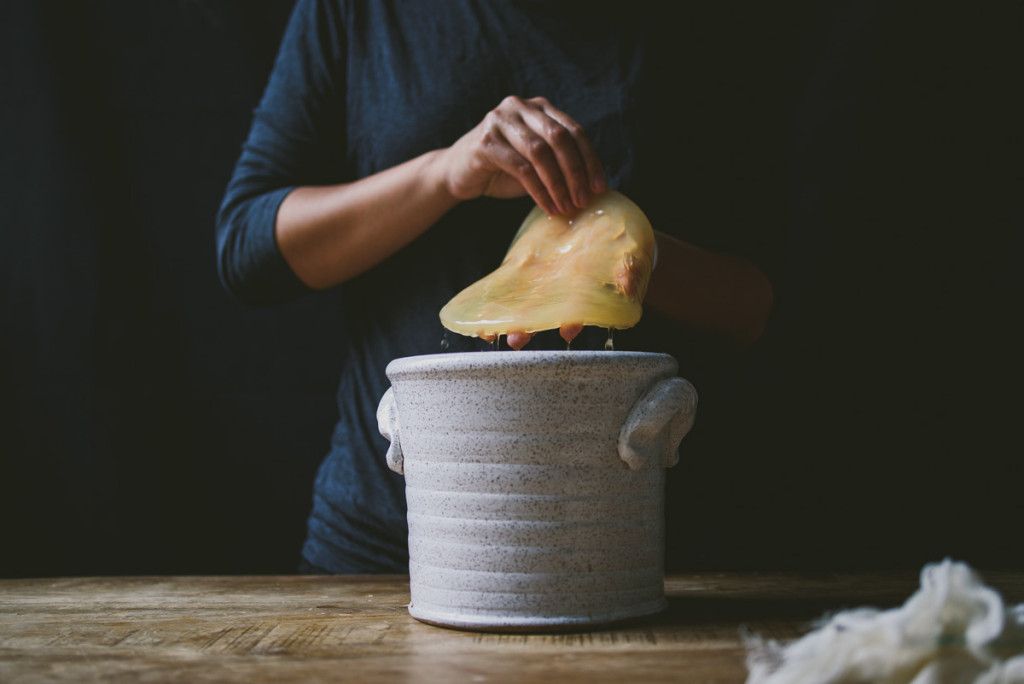
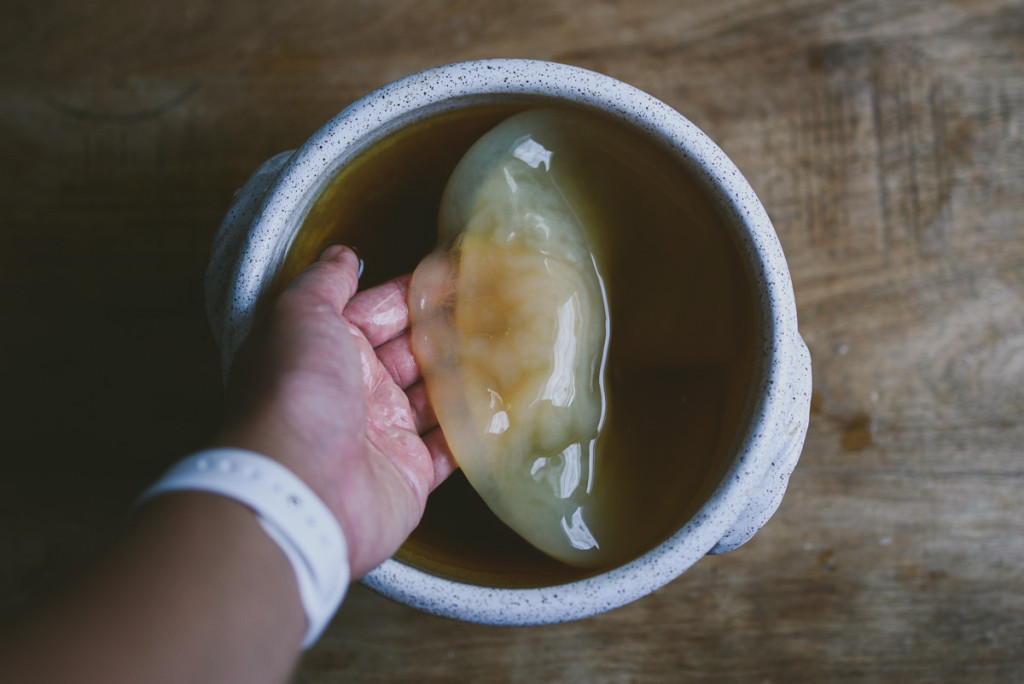
Fermentation is a natural, living process. It’s a fact made me want to run away clutching my new beautiful fermentation crock and set it on a pedestal, something to admire and think about, but not to use. However, the idea of making kimchi, yogurt, sourdough, kombucha, and jun tea in my own home, with control over flavors, was too tempting––and so my fermentation obsession began.
Fermentation is a metabolic process that occurs on a microbial level through which bacteria or yeast consumes carbohydrates, producing organic byproducts that can be acidic, gaseous, or alcoholic. Fermentation in kombucha specifically happens first aerobically, producing acids to get the signature tangy, sharp taste. Then, the resulting brew can be bottled where it will undergo a second fermentation––this time anaerobic––to build up carbon dioxide, obtaining the natural fizz often associated with kombucha.
Even though kombucha has only recently exploded with popularity, in fact it has been around much longer. I recall telling my dad, who grew up in Shanghai, about this exciting project. He interrupted me as I was excitedly describing the appearance of a SCOBY, asking “Isn’t this hong cha jun?” Hong cha is Chinese black tea. Jun can literally be translated to “mushroom.” I paused.
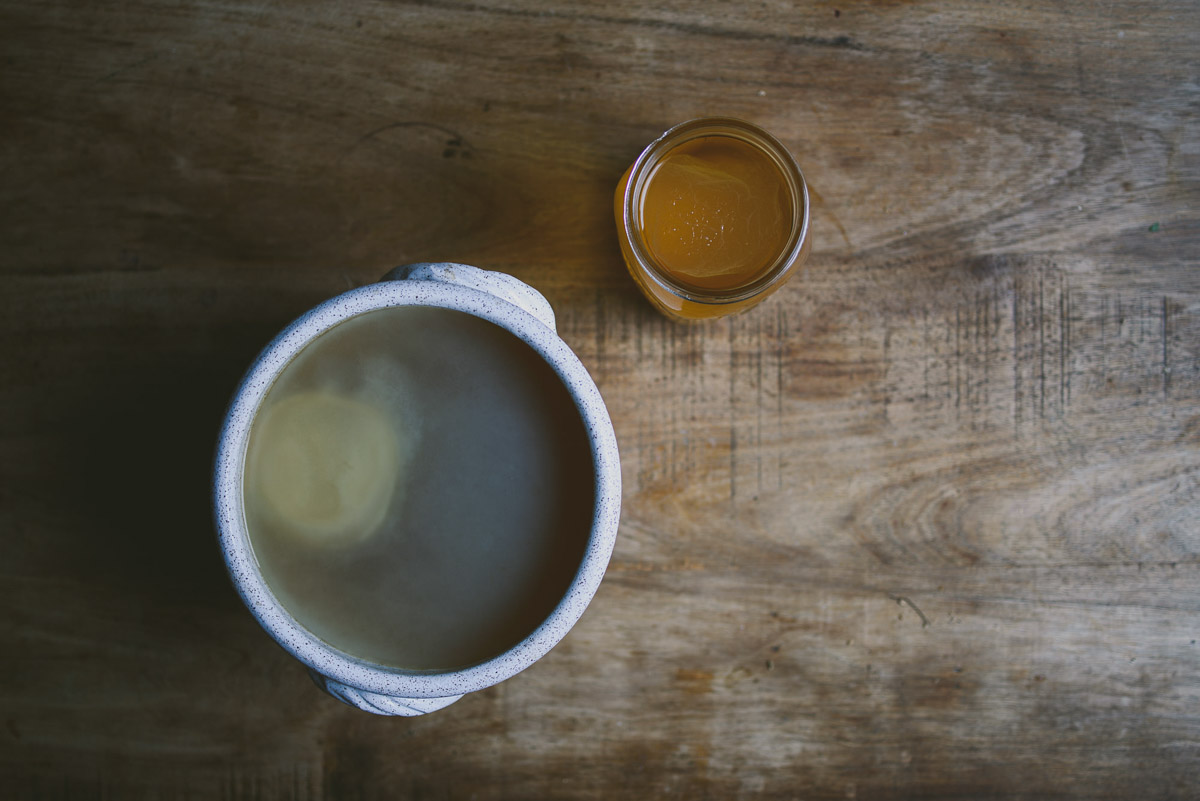
He went on to explain that this is something he made almost every summer as a teenager in Shanghai. In fact, the whole neighborhood came together and brewed large batches together. “It’s refreshing, especially for the hot and humid summers in China,” he said matter of factly. I had to laugh.
I was introduced to fermentation by Jeremy Ogusky, a local potter known for his fermentation crocks, who kindly gifted me a beautiful, handmade crock of my own. His enthusiasm for fermentation spurred me to immediately make whole cabbage kimchi (baechoo kimchi) with great success. But when I expressed the smallest desire to make sourdough or kombucha, I hit a roadblock. Where do I get a SCOBY or sourdough starter? The answer was simple: from someone else. Through many conversations and emails, I began to realize that Jeremy not only made crocks suited to fermentation, but he is also one of the leaders in the fermentation community and the head organizer for the now annual Boston Fermentation Festival.
Education. This is the foundation of every event, workshop, and class that he hosts. A rapidly growing fermentation community means people interested in learning, beginning with Fermentation 101 (such as sauerkraut or kimchi), to more advanced fermentation, like making miso.
The third annual Fermentation Festival in Boston will take place this October, and epitomizes the philosophy behind the fermentation community in Boston, one built on education, awareness, and access. Completely volunteer-run, the festival will feature kraut mobs (in which attendees can participate and walk away with a jar of sauerkraut), microbiologists from local universities discussing the biochemistry behind fermentation, a kid-friendly culture petting zoo, a culture sharing booth for SCOBY and other starters, and a whole program of speakers including Cheryl Sternman Rule (author of Yogurt Culture), on fermentation. I’m excited to participate and contribute to this community, which has welcomed me with open arms and warm smiles. Not only did I obtain my first baby SCOBY locally, but I’ll also be learning to make my own miso with a fellow fermenter. Jeremy truly believes this aspect of the Boston community can speak to the larger fermentation culture.

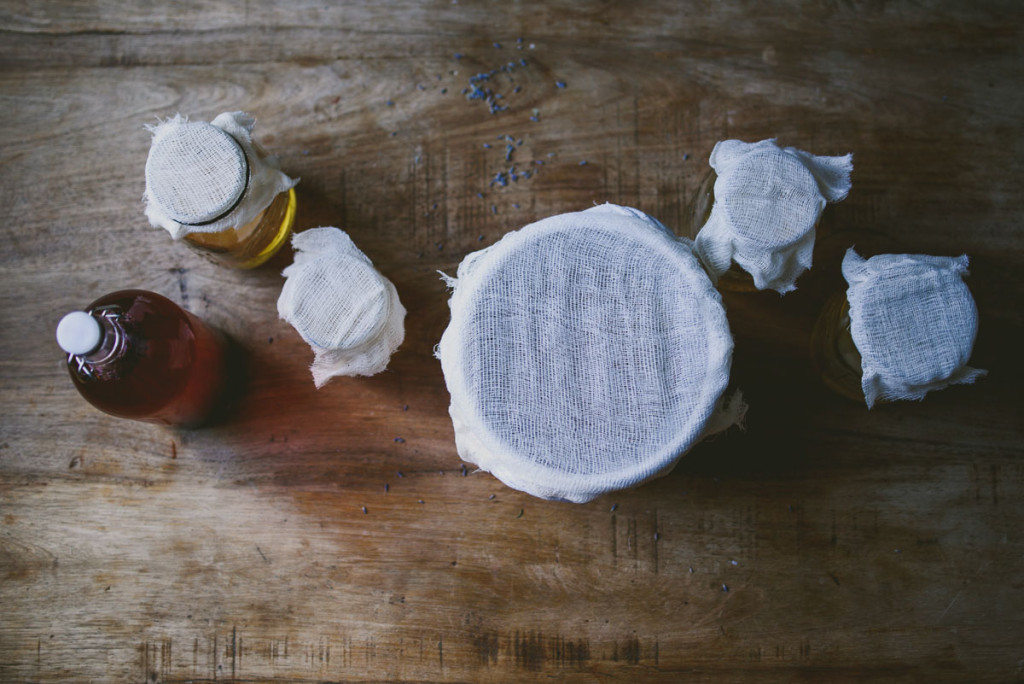
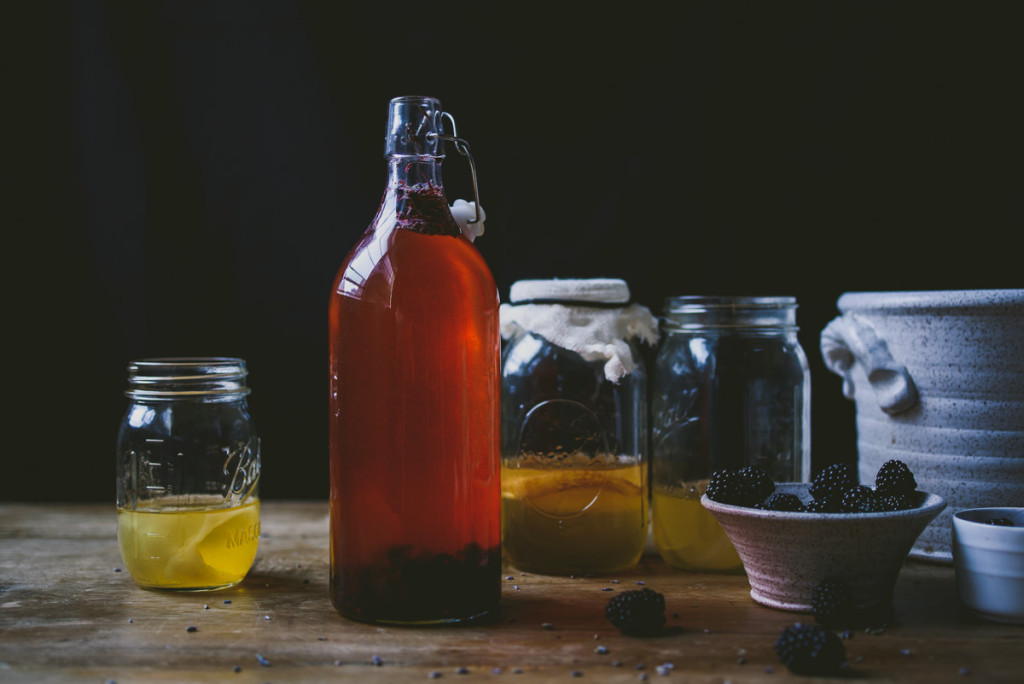
Kombucha tastes sharp, tangy, and refreshing. It is truly a blank canvas, and can be made with varieties of tea, sweeteners, and secondary flavorings such as herbs or fruits. Cold, fizzy, flavored kombucha, topped off with vanilla ice cream in an ice cream float is a perfect treat on a hot day. Once the initial batch is made, there are endless possibilities for secondary flavorings and ice cream combinations. Below, I’d like to share this Blackberry Lavender Kombucha Float.
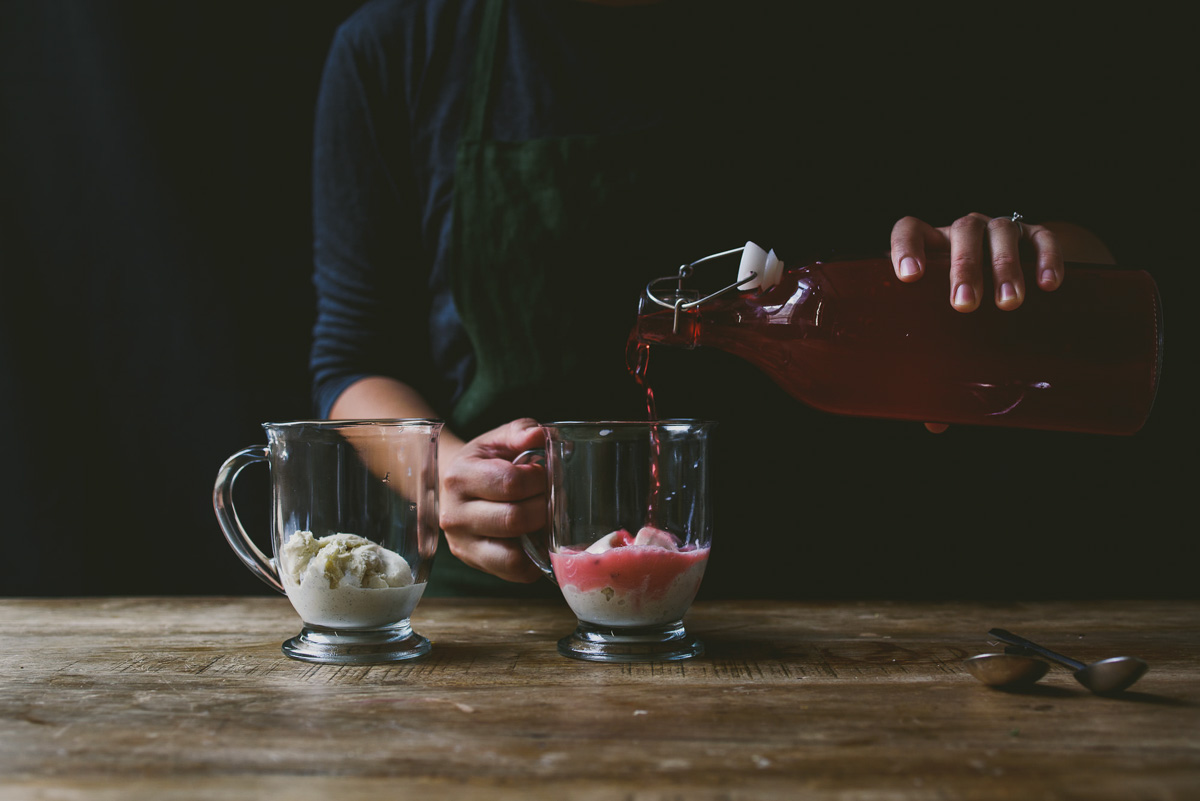
There are many detailed resources for making kombucha at home, including Kombucha Brooklyn, which you can find here, but you’ll need tea, water, SCOBY, starter kombucha or distilled white vinegar, a wide-mouthed jar for maximum aeration, and a fine-weave cover.
I used Chinese black tea and cane sugar for the initial ten-day fermentation. I bottled the kombucha with crushed blackberries and dried lavender buds for a second, anaerobic three-day fermentation. Be sure to “burp” your brew at least every other day to prevent the build-up of too much pressure.
—
A few notes on caring for your brew:
- There are two common contaminations: fruit flies and mold. I used multiple layers of cheesecloth with great success, but have heard that fruit fly contamination can still be a common problem with cheesecloth. If you’re concerned, I recommend using a finer-weaved cloth, such as a tea towel.
- Regarding mold, if you see fuzzy, dry patches on your SCOBY, you’ll need to dispose of the entire batch.
- Always sanitize your equipment and hands. Avoid using antibacterial soap because SCOBY by nature consists of bacteria and yeast. You can gently rinse your vessels with distilled white vinegar.
- When brewing a new batch of kombucha, I always reserve a “safety” SCOBY – you should be able to easily peel layers away. I use one for my big brew, and another with some fresh sweet tea in a smaller jar, just in case.
- 10% of your brew should be starter kombucha (you can substitute distilled vinegar if you don’t have starter). This promotes the health of your SCOBY and also provides an acidic enough environment to discourage other microbes from thriving.
- The kombucha vessel used should have a wide mouth for maximum surface area to volume ratio. Air is kombucha’s friend. Store away from direct sunlight in a warm place.
- For your second fermentation, be aware that the sweeter the additions, the faster the ferment, and the build up of carbonation.
- Don’t use a metal lid, as the acidic brew will react with metal. I recommend flip-top brewing bottles.
- I’ve used black tea, jasmine green tea, and oolong with much success. As long as you use a tea from the plant camellia sinensis, your brew should succeed.
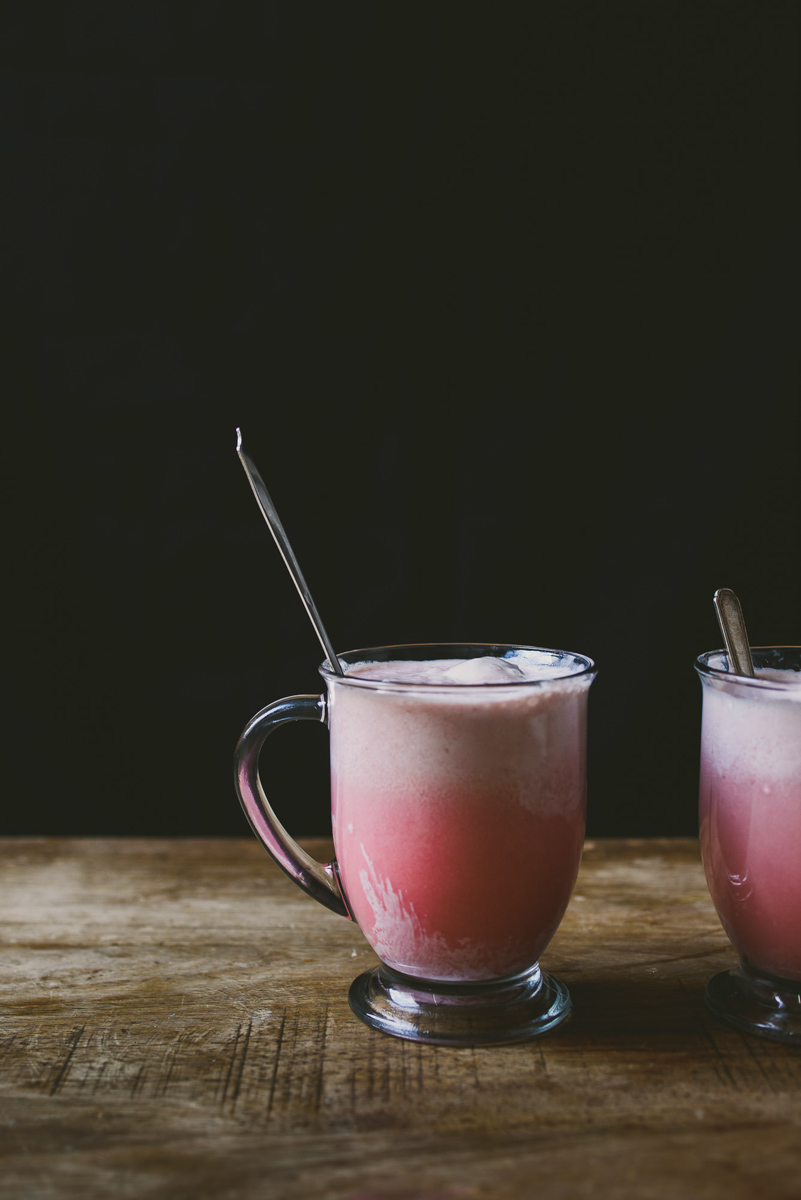
Blackberry Lavender Kombucha Float
Ingredients
- 3 plus 7 Cups Pure Water, Separated
- 3 Tbsp Loose Leaf Tea (or Equivalent in Tea Bags, About 7-8 Bags)
- 1 Cup Sugar
- 1 Cup Starter Kombucha or Distilled White Vinegar
- SCOBY
- 1/3 Cup Crushed Fresh Blackberries
- 1 Tbsp Dried Lavender Buds
- Vanilla Ice Cream
Instructions
- Prepare sweet tea. Bring 3 cups of water to a boil. Add 1 cup sugar and stir until dissolved. Turn off heat, place tea strainer in and let steep for 5 minutes. Then add in the remaining pure water and let cool to room temperature. Let leaves remain in as the sweet tea cools.
- Remove strainer and add sweet tea to fermentation vessel.
- With clean hands, gently slide SCOBY to the top of the crock. If it sinks, don’t worry about it.
- Cover jar with layers of porous material and rubber band it tightly.
- Place brew in a warm corner away from direct light and away from other fermentation vessels.
- Ferment for 7-10 days. At day 7, taste the brew. The longer the ferment, the more tangy your brew will taste. Kombucha should be tart and sweet.
- Second ferment: Pour the brew into glass jars with airtight lids and seal with secondary flavoring for another 2-5 days. Let burp once a day to prevent drastic pressure buildup.
- When kombucha is flavored and fizzy enough, transfer to the fridge. Serve after straining and top with vanilla ice cream.





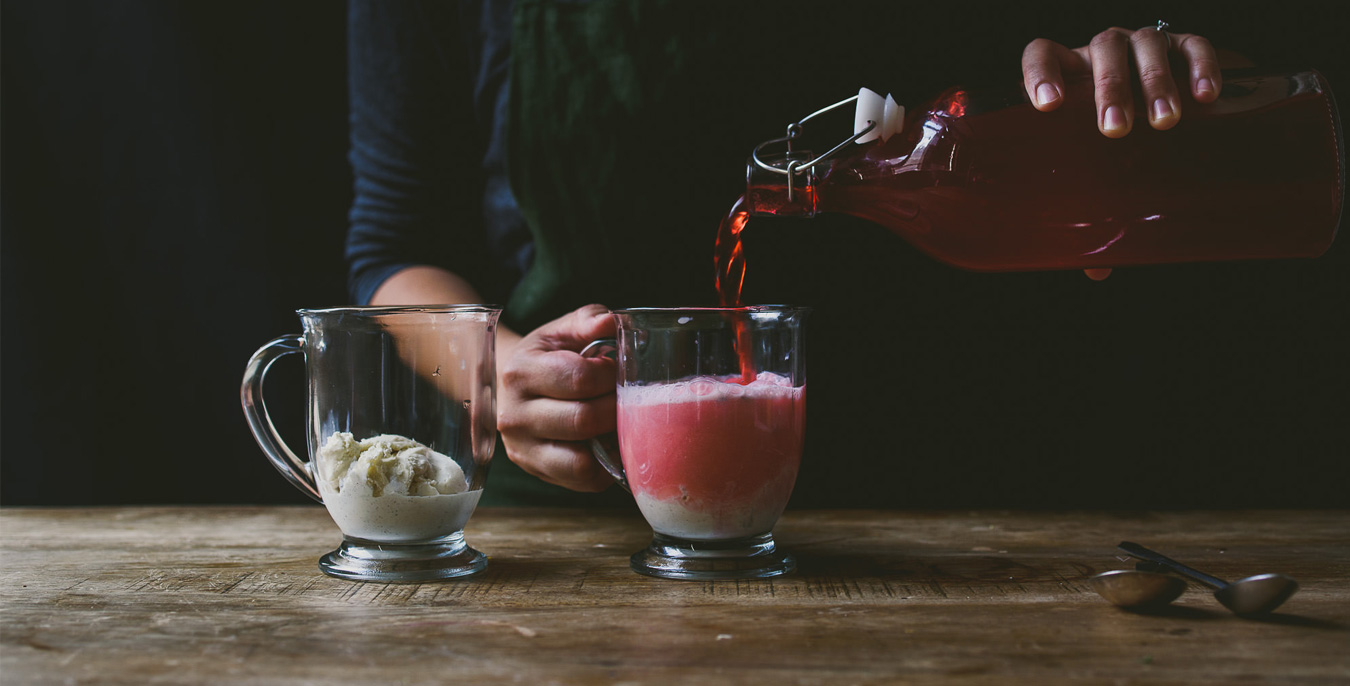

Our comments section is for members only.
Join today to gain exclusive access.